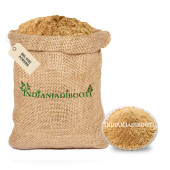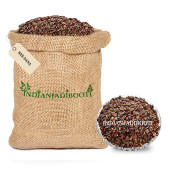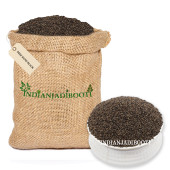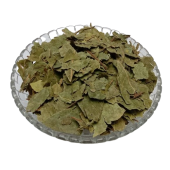Ashoka Chaal Powder - Ashoka Chhal - Ashoka Chal - Ashoka Bark - Saraca indica
1Availability: In Stock
Ashoka Chaal Powder - Ashoka Chhal - Ashoka Chal - Ashoka Bark - Saraca indica
Order Online Pure Ashoka Chaal Powder - Ashoka Chhal - Ashoka Chal - Ashoka Bark - Saraca indica from IndianJadiBooti.com at Best Price
One of India's oldest and most venerated plants is the ashoka, also known as the ashoka briksh.
Many of Ashoka's medicinal qualities can be found in its bark and leaves.
Ashoka helps women deal with gynaecological and menstrual problems like painful, erratic, and heavy periods.
To treat stomach pain and spasms, it can be taken twice daily after meals in the form of churna/powder or capsule.
Juice or kwath made from Ashoka bark, which has the ability to cleanse the blood, can assist support healthy skin.
1. Exhausting periods (Dysmenorrhea)
The discomfort or cramping that happens during or before a menstrual cycle is known as dysmenorrhea.
In Ayurveda, this condition is known as Kasht-aartava.
Ayurveda states that Vata dosha controls and regulates aartava, or menstruation.
Vata must be under control in a woman in order to treat dysmenorrhea.
With its ability to balance Vata, Ashoka can treat dysmenorrhea.
It soothes agitated Vata and reduces cramping and abdominal pain throughout the menstrual period.
A. Boil the Ashoka tree bark in water until only 1/4 of the original volume of water remains.
B. Pour the liquor through a strainer into an Ashoka kwath bottle.
C. Add between 8 and 10 teaspoons of Ashoka kwatha.
D. To reduce menstrual pain, add the same amount of water and drink it after lunch and dinner.
2. Excessive menstrual bleeding (Menorrhagia)
Raktapradar, or excessive menstrual blood secretion, is the term used to describe menorrhagia, or significant monthly bleeding.
This is associated with an aggravated Pitta dosha.
Ashoka balances Pitta and lessens menorrhagia, or excessive menstrual flow.
due of its Sita (cold) characteristics.
A. Boil the Ashoka tree bark in water until it is reduced to one-fourth of its original volume.
B. Pour the liquor through a strainer into an Ashoka kwath bottle.
C. Add between 8 and 10 teaspoons of Ashoka kwatha.
D. Combine the same amount of water with the same amount of sugar to treat menorrhagia by drinking it after lunch and dinner.
3.Piles
In Ayurveda, piles are referred to as Arsh and are brought on by a sedentary diet and lifestyle.
All three doshas are put at risk by this, especially Vata.
Increased Vata, which has a weak digestive fire, is what causes constipation.
The rectum develops enlarged veins as a result, causing pile bulk.
By regulating Vata, Ashoka reduces swelling of pile masses.
Due to Ashoka's Sita (cold) nature, it also soothes burning and irritation in piles.
In addition to cooling the anus, it also reduces burning feelings.
4. Leucorrhea
A thick, white discharge from the female genitalia is a hallmark of leucorrhea.
Leucorrhea, according to Ayurveda, is brought on by an imbalance in the Kapha dosha.
Ashoka functions effectively in leucorrhea due to its Kashaya (astringent) character.
It assists in controlling aggravated Kapha and easing leucorrhea symptoms.
A. Boil the Ashoka tree bark in water until it is reduced to one-fourth of its original volume.
B. Pour the liquor through a strainer into an Ashoka kwath bottle.
C. Add between 8 and 10 teaspoons of Ashoka kwatha.
D. Add the same amount of water and drink it after lunch and dinner to treat leucorrhea.
0% Customers recommend this product
Copyright 2018, IndianJadiBooti.in Disclaimer: The information given on the website has not been evaluated by FDA, or by us. This data is for basic information purpose only, and is not intended to make a diagnosis, cure, avert or treat any illness or disease. We strongly suggest visiting and consulting a qualified Ayurvedic Practitioner before starting or following any regime.






 Facebook
Facebook Instagram
Instagram Pinterest
Pinterest Twitter
Twitter
